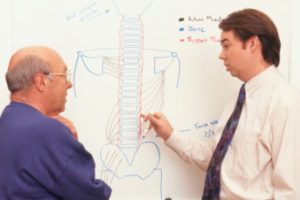Happy Mother’s Day!!!

Happy Mother’s Day to all Mothers and Nurturers everywhere!

Happy Mother’s Day to all Mothers and Nurturers everywhere!
 Forming new habits can be just as difficult as breaking old ones. But when you stop to think about it for a moment, it is clear that all of our habits, both positive and negative, had a beginning—a time BEFORE the behavior became a clear, recognizable pattern. In other words, there was a time when your current habits weren’t yet habits at all!
Forming new habits can be just as difficult as breaking old ones. But when you stop to think about it for a moment, it is clear that all of our habits, both positive and negative, had a beginning—a time BEFORE the behavior became a clear, recognizable pattern. In other words, there was a time when your current habits weren’t yet habits at all!
So how do new habits actually form? And is there a way for us to develop POSITIVE new habits in a focused, deliberate way? We call this “making new habits ‘stick’”.
Like anything we learn, our first attempts at any new skill are usually halting and inconsistent. But slowly it becomes second nature until we can’t remember a time when we found the behavior unusual, uncomfortable or challenging. Once we’ve learned how to do something and turned that something into a recurring pattern of behavior, it’s “like riding a bicycle,” as the saying goes…
New York Times investigative reporter Charles Duhigg became something of an expert on the science of habit formation and change. He read hundreds of studies and interviewed the scientists who conducted them to discover the mechanisms behind habit formation, and wrote a book on the subject, “The Power of Habit: Why We Do What We Do in Life and Business.”
Duhigg has described a self-reinforcing process he calls the “Habit Loop”. Based on his interpretation of neurological studies, Duhigg believes that every habit has three components: “a cue—a trigger for a particular behavior; a routine, which is the behavior itself; and a reward, which is how your brain decides whether to remember a habit for the future.” For example, let’s say you want to stop being admonished by your dentist for not flossing regularly. First you put the dental floss right next to the toothpaste, so you can’t miss it (the cue). Then every time you go to brush your teeth (the routine) you floss because it’s right there in front of you. Finally, when you go to the dentist, he or she praises you for flossing regularly (the reward).
Establishing a new habit takes most people about 30 days, although it can frequently take twice that. You can improve your chances of success if you’re able to do a little advance planning. For instance, imagine you want to develop a habit of going to the gym every day. First, start small. For the first month, plan on going to the gym three days a week for 30 minutes each. Plan your workouts for days and times that are least likely to have things such as work or childcare interfere with your gym schedule. It can also help to enlist a buddy who has similar goals to join you so you can reinforce each other’s commitment. Then figure out a reward to give yourself for each completed workout, such as going out for a drink afterward with your workout buddy or enjoying a little Ben and Jerry’s, guilt-free. You can also give yourself some long-term rewards to envision, such as looking good in a bikini on the Caribbean beach you plan to visit next summer. If you can stick with it regularly for a month, there’s a good chance it will become part of your weekly ritual and you will soon crave your workouts. You can then gradually build up to more days. In three months, you may find that if you have to skip a workout you actually MISS it! Something’s just not right…
Duhigg says “If you can identify the right cue and reward—and if you can create a sense of craving—you can establish almost any habit.”
 Did you know that fully a quarter of your body’s bones are in your feet? These complex marvels of engineering by Mother Nature provide your body with a firm foundation, and are constantly in demand to help move the body from one place to another. With 19 muscles and 26 bones each, your feet are important for the balance and health of the entire body.
Did you know that fully a quarter of your body’s bones are in your feet? These complex marvels of engineering by Mother Nature provide your body with a firm foundation, and are constantly in demand to help move the body from one place to another. With 19 muscles and 26 bones each, your feet are important for the balance and health of the entire body.
Dr. Brian Jensen, a chiropractor, offers this perspective: “By age 20, an estimated 80 percent of people develop some type of foot imbalance. By age 40, foot imbalances plague virtually everyone.” If the foundation is out of balance, then the rest of the structure (the body) is thrown out of balance. Invariably, this means the ankles, knees, hips and spine are adversely affected. A misaligned spine can cause chronic pain and can increase the risk of other musculoskeletal problems.
One key way the feet can cause spinal problems is by causing an imbalance in your gait—the way you walk. If your stride is off a little, it can eventually cause the supporting structures of your spine to be subject to stress in the wrong places, eventually pulling your spine out of alignment. According to Dr. Jenson, collapsed arches (“over-pronation”) are the most common source of problems with the feet, causing them to roll inward as an individual walks. Excessive supination (“under-pronation” or the foot rolling to the outside) is the opposite problem.
Both over-pronation and under-pronation often leave telltale signs in the uneven way a person’s shoes wear over time. Typically, a shoe’s heel or sole will become noticeably more worn on either the inside or outside edge. Some pronation is normal, but when both feet pronate too much and for too long a period, then your musculoskeletal health is at risk.
The U.S. Centers for Disease Control and Prevention (CDC) warns of two other health problems involving the feet—obesity and diabetes. Carrying lots of extra weight obviously increases the wear and tear on your body’s joints and is particularly hard on the feet. Diabetes can affect circulation as well as the peripheral nervous system—especially in the extremities—making it more difficult to walk and more difficult to heal after injuries. Both of these conditions set up a vicious cycle where pain and dysfunction often lead to reduced mobility, which in turn often leads to additional weight gain and diabetic symptoms.
Depending on your particular situation, your chiropractor can assist you in finding the proper orthotics for your feet to help correct these kinds of mechanical issues and increase the amount of healthy cushion for absorbing the shock of walking.
And remember—the condition of each foot can change over time, so visit your chiropractor regularly to see if you need special insoles to protect your feet, ankles, knees, hips and spine.
 Manual therapies have been used to treat musculoskeletal disorders for thousands of years. Practitioners around the world—in countries with many different cultural influences and diverse medical traditions—have used their hands to manipulate various parts of the body to stimulate healing. “Manual” literally means “by hand.” Thus, manual therapies consist of healing techniques that use the hands. There are more than two dozen techniques used worldwide. Among the most commonly known are acupressure, chiropractic, massage therapy, physiotherapy, reflexology, Rolfing and shiatsu.
Manual therapies have been used to treat musculoskeletal disorders for thousands of years. Practitioners around the world—in countries with many different cultural influences and diverse medical traditions—have used their hands to manipulate various parts of the body to stimulate healing. “Manual” literally means “by hand.” Thus, manual therapies consist of healing techniques that use the hands. There are more than two dozen techniques used worldwide. Among the most commonly known are acupressure, chiropractic, massage therapy, physiotherapy, reflexology, Rolfing and shiatsu.
There are also dozens of other, lesser-known manual therapies, including the Bowen technique, cranio-sacral therapy, the Dorn method, manual lymphatic drainage, muscle energy technique, myofascial release, myotherapy, naprapathy and zero balancing. We examine the most common therapies here:
Acupressure
Using the hand, the elbow or various devices, an acupressure practitioner applies a light force on various parts of the body following the patterns found in traditional Chinese medicine and acupuncture. More than half of the scientific studies on acupressure showed that this technique was effective, but some critics have claimed “a significant likelihood of bias.”
Chiropractic
Most chiropractic work involves manipulation of the spine to achieve better vertebral alignment. Lower back pain is perhaps the primary complaint which leads patients to a chiropractor. Chiropractors are expert at treating musculoskeletal conditions without the use of drugs or surgery. Among others, many top athletes swear by their chiropractor’s hands to keep them performing at their best and help them avoid injuries.
Massage Therapy
This is perhaps the oldest of the manual therapies. Massage was (and still is) used in ancient Egypt, China, Mesopotamia, and other parts of the world that gave rise to early civilizations. Massage practitioners chiefly use their hands, but also other parts of their body to apply pressure, rolling motions and other techniques to muscles and joints, to stimulate circulation and relax the patient. In today’s high-stress world, massage is proving ever more popular.
Physiotherapy
Physiotherapy has been used for years as standard treatment for patients suffering from musculoskeletal conditions. A physical therapist uses a variety of techniques to help their patients regain function—particularly mobility. Repetitive, assisted motion can help the patient strengthen muscles that have been damaged through injury or disease. Assisting the patient in the performance of targeted exercises can help a patient regain greater range of motion.
Reflexology
A trained reflexologist applies pressure to various parts of the feet, hands or ears to stimulate organs within the body associated with the part to which pressure is being applied. It is a Chinese therapy with a philosophy that is similar to acupuncture—using points on the body to restore energy flow. Although there is not yet much scientific evidence to support its effectiveness, anecdotal evidence shows that patients are happier and more relaxed after treatment.
Rolfing Structural Integration
Rolfing specifically targets the body’s connective tissue to release tension, realign and balance the body. Rolfing techniques involve deep-tissue massage to achieve therapeutic benefits such as better posture and greater freedom of movement, including reducing stress and relieving pain.
Shiatsu
A traditional Japanese therapy, the term Shiatsu means “finger pressure,” but can include palm pressure and other approaches to massage. A Shiatsu practitioner uses touch, comfortable pressure and manipulative techniques on specific points of the body (similar to the meridians of Traditional Chinese Medicine) to adjust the body’s physical structure and balance its energy flow. Anecdotal evidence shows it to relieve patients of stress, nausea, muscle pain, depression and anxiety.
 Perhaps the most frequent injury involving automobiles comes from closing the door. Nearly 150,000 times a year, someone is injured in this fashion, and that’s with the car parked or stationary. This includes doors closing on fingers. Another 10,000 are injured by using a jack and 74,000 have been injured by a car or car part falling on them.
Perhaps the most frequent injury involving automobiles comes from closing the door. Nearly 150,000 times a year, someone is injured in this fashion, and that’s with the car parked or stationary. This includes doors closing on fingers. Another 10,000 are injured by using a jack and 74,000 have been injured by a car or car part falling on them.
But cars also move. Roughly one third of auto-related injuries occur due to an automobile striking someone, particularly pedestrians and bicyclists. Injuries can include anything from simple scrapes to multiple broken bones, dislocated vertebrae and damaged internal organs.
A Forbes magazine article noted that researchers from the US Department of Transportation “estimated an annual total of 1,747 fatalities and 841,000 injuries due to non-traffic crashes and non-crash incidents.” These included back-overs and single-car collisions not on a highway.
During a collision, passengers can be thrown about within the car, or be ejected from the vehicle (particularly if not wearing a seatbelt), causing significant injuries. One of the most serious of these is called traumatic brain injury (TBI). This is when the brain becomes bruised or otherwise injured. This can happen when the head is forced into rapid acceleration and/or deceleration from impact with other objects, such as a windshield, the body of the car or objects outside of the car. Such brain injuries can result in brain function impairment or even death.
Neck injuries include whiplash and vertebrae disk damage. These can result in a range of effects from persistent, long-term discomfort to debilitating pain and even immobility. Whiplash is perhaps the most common malady, which happens when the neck snaps quickly backward (during acceleration), then forward (during deceleration), causing hyperflexion and hyperextension of the cervical vertebrae. After an accident, the victim may be unaware of any damage, but may experience headaches or neck stiffness hours or days later.
A chiropractor can recognize this kind of damage using a variety of diagnostic tests with and can treat it with multiple adjustments, massage therapy and repetitive exercises performed by the patient at home. The chiropractor may even recommend a traction weight bag to help the neck return to its natural curve. Sometimes the damage is permanent, but treatment can reduce the discomfort and decrease in range of motion that might otherwise plague the patient.
Damage anywhere along the spine can occur during a car accident. This type of injury can range from mild to life-threatening. Dislocated vertebrae can result in excruciating pain that can lead to tight back muscles which intensify the problem. Physical therapy and chiropractic adjustments can help return the patient to health. Rehabilitative therapy can also include hot packs, massage, cold packs, traction, ultrasound, electrical stimulation and other methods.
When the spine is injured, symptoms can include difficulty breathing, tingling, numbness, paralysis, arm weakness, leg weakness, and unusual bladder or bowel control. If you are experiencing these or other unusual symptoms, seek proper care from a chiropractor or other health professional immediately.

A “pinched nerve” refers to a condition in which a nerve is compressed by surrounding tissue, such as ligament, cartilage, tendon or bone. The term “pinched nerve” is not a standard medical expression, but it’s an intuitive expression that almost anyone will understand.
Nerves radiate from your brain, down your spine and to all other parts of the body. Signals are sent from and to the brain along the nerves, and if a nerve is compressed (“pinched”), it will interfere with proper signal transmission. Usually, this will manifest as pain, not only at the site of compression, but sometimes radiating from that point to surrounding parts of the body. Misalignment of the spine can result in pinched nerves that can give you back pain and even a deadening ache or sensitivity along your arms (cervical radiculopathy) or legs (sciatica).
Any pain of this sort is a warning signal that there is a problem that should be treated right away. Left untreated, pinched nerves can lead to a loss of the protective barrier around the nerves which could generate fluid buildup. And this fluid would create swelling, more pressure, more pain, and possibly scarring. When nerves have been scarred, they may no longer function properly.
Pain isn’t the only indication of a pinched nerve. Sometimes a compressed nerve will generate numbness or tingling, a burning or “pins and needles” sensation, or even weakness during certain activities.
Pinched nerves can occur more often when the following risk factors are involved:
Mainstream medicine frequently recommends drugs, including NSAIDs, oral corticosteroids, narcotics (for emergency, short-term pain relief) and steroid injections to treat the symptoms of a pinched nerve. The Mayo Clinic suggests that patients can sometimes recover within a few days or weeks from pinched nerves with rest and additional “conservative treatments.” Other mainstream medical treatments may include physical therapy, a splint to immobilize a limb to give it a bit of rest, or surgery.
A chiropractor specializes in nerve health and non-invasive methods of reducing pain and restoring proper function, including spinal adjustments and other treatments that take the pressure off the nerves without the need for drugs or surgery. Sometimes a single adjustment can lead to immediate relief. In other cases, repeat visits may be required for full recovery. If you or someone you care about is suffering from a pinched nerve, you should know that there are alternatives to drugs and surgery and that chiropractic care has proven effective in treating the source of the problem so it is less likely to recur in the future.
If you would like to be seen by Dr. Oblander for treatment of a pinched nerve or any other ailment, please call our office at 406-652-3553 to schedule an appointment.

You can’t switch on a television these days without seeing a commercial for some new pharmaceutical that will cure whatever may ail you (or cure you from an illness you never knew you had). If you pay attention to it, you will notice that nearly half the ad time is taken up with a long list of possible side effects and adverse reactions that may accompany taking the drug. The possibilities often include everything from slight fatigue to death.
An estimated 4.5 million Americans visit their doctor or the ER each year due to adverse reactions to prescription drugs. These adverse side effects are also suffered by an additional 2 million people each year who are already in the hospital being supervised by medical professionals. The CDC estimates that 82% of Americans are taking at least one drug, and 29% are taking five or more drugs.
The US Food and Drug Administration (FDA) is in charge of approving pharmaceutical drugs for sale in the US. However, their methods for approval are based on the drug companies providing their own scientific studies on the safety of the drug. The FDA does no independent testing. The FDA will usually approve a drug if its benefits are believed to outweigh its dangers. Even assuming the drug companies’ studies have been well-conducted and show that a drug is relatively safe, no drug is completely free from side effects for everyone, even those drugs that are “natural.” A person’s age, weight, gender, overall health and genetic profile have a lot to do with how an individual will respond to a drug.
The most common side effects are gastrointestinal problems, as most drugs are processed via the digestive tract. These problems include nausea, vomiting, constipation and diarrhea. Other common side effects are drowsiness, fatigue and mild skin reactions. Although dizziness may not seem like a dangerous side effect, it can be particularly risky for seniors. According to the Centers for Disease Control and Prevention (CDC), falls among seniors are the leading cause of injury-related death. A quarter of all seniors who fall and break a hip will die within six months of receiving the injury.
Death is of course the most serious side effect of all. Allergic reactions that cause anaphylaxis can be deadly. Some drugs, such as those that treat type 2 diabetes (Actos and Avandia, for example) can cause a stroke or heart attack. Antidepressants can actually increase suicidal thoughts. Some drugs can cause pain and total or partial paralysis, such as the cholesterol-lowering drug Lipitor. Some drugs increase your risk of cancer. Ironically, the drug Tamoxifen, prescribed to treat breast cancer, actually increases the risk of uterine cancer. Memory loss, hallucinations, loss of taste and loss of sight are other common side effects of pharmaceuticals.
Although there is no doubt that some pharmaceuticals are far more useful than they are dangerous (antibiotics, for example), if you want to avoid the harmful side-effects that many drugs may produce, try to keep as healthy as possible. Eat right, get regular exercise and visit your Billings Chiropractor Dr. Greg Oblander to keep your body in top condition.

According to the U.S. Centers for Disease Control and Prevention (CDC), one in three adults over the age of 65 has a fall in any given year. Falls are the leading cause of injury-related death for adults in this age range, as well as the most common cause of trauma-related hospital admissions. More than 1.6 million older adults go to the emergency room for fall-related injuries each year in the United States. Whether you are above the age of 65, or you care for someone who is, knowing how to prevent a fall could help you save a life.
There are several risk factors that you can address to help prevent a fall. The first factor is a lack of physical activity. As adults grow older it becomes difficult to exercise on a regular basis. This leads to a decrease in strength and a loss of bone flexibility and mass. All of these factors can make falls more likely and injuries more severe.
Fortunately, there are ways for older adults to stay active. Regular exercise is the best place to start. Fifteen minutes of an exercise designed to increase bone and muscle strength should be done every other day. This can be as simple as taking a walk or going for a swim a few times a week.
The risk of falls increases when seniors do not take adequate time to carry out daily activities. It is important to stay safe and to take your time when bending over and when lifting things. Be sure to recover your balance first before taking a step when getting out of bed or a chair.
Seniors on medications may find that their balance is impaired and their mental alertness is reduced. Some medications can cause a drop in blood pressure while you are standing up, throwing you off balance. Be sure to understand all of the side effects of your medications, and be clear with your doctor about any fears you have about your balance. He or she may be able to reduce your dosage to help keep the side effects under control.
Environmental hazards are one of the biggest risk factors for senior falls. These hazards can include items on the floor that are easy to trip on, loose rugs, unsteady furniture, and poor lighting.
To reduce the risk of environmental factors causing a fall, take time to walk through the house to locate any potential hazards. Rugs can be secured with nonskid tape and throw rugs can be removed altogether. Furniture should be kept in good repair and clutter should be kept to a minimum. Finally, consider having grab bars installed to help you get up and down securely.
Falls among seniors can be frightening, but there are steps that you can take to help prevent them. By being cautious and staying in good health, seniors can increase their chances of avoiding harmful falls.
 We are sharing an article today that was first run in the Billings Gazette in 2014. We think it has some good information and we have added a few tips of our own at the conclusion of the article:
We are sharing an article today that was first run in the Billings Gazette in 2014. We think it has some good information and we have added a few tips of our own at the conclusion of the article:
Chiropractors are a great resource for people with back, head or neck pain. These professionals believe that realigning your spine will help relieve pain and discomfort in the body.
People often find relief by seeking help from a chiropractor. They report having improvements in their muscles, joints, bones and ligaments.
It will often improve your general health as well. Headaches and sinus pain can also be healed with treatments.
Thinking about the following factors can help you find the right chiropractor for your needs.
Quality
Chiropractors have some of the most stringent educational requirements in the health care industry. According to the American Chiropractic Association, accredited chiropractors go through at total of at least 4,200 hours of classroom, laboratory and clinical training time combined.
Students must spend four years in a pre-medical program, in addition to four or five years of professional training.
It is vital that the student understand different aspects of the body.
Prior to selecting a chiropractor, inquire about training and credentials. Make sure he or she is properly qualified.
Insurance Coverage
Many insurance carriers include chiropractic care as part of their regular coverage.
But if you don’t have insurance, many chiropractors offer low cash rates or affordable plans to help patients. Even without health insurance, you can still find chiropractor offering quality, cost-effective care.
Get Referrals
Someone in your social or professional network has likely received excellent care from a chiropractor. Ask family, friends and co-workers for referrals.
Inquire specifically about his or her demeanor and schedule. Is it easy to make an appointment? You should also find out about the chiropractor’s philosophy about health and other wellness issues. Some practitioners will suggest complementary forms of care, including massage.
Given the results it can provide, chiropractic care is still affordable and well worth the money. With time and effort, you are likely to find a quality chiropractor in your area.
Our Own Comments:
We believe that it is a good idea to find a chiropractor that will listen to you. The doctor should be interested in understanding what issues you are seeking treatment for and resolving those issues. A doctor that is interested in getting you in and out of the adjusting room as quickly as possible is often more interested in his/her pocketbook than in your care. Also, a doctor that educates his/her patients is invaluable.
We are grateful that Dr. Oblander is the kind of doctor that genuinely cares for his patients and who seeks to give his patients the care they need, want and deserve!
For our current patients who read this, we would appreciate your online reviews for our office and Dr. Oblander. We have provided links below to make it easier for you!:
https://www.yelp.com/biz/oblander-chiropractic-billings-2
https://drive.google.com/open?id=1vTNoEI3dW-g4oqa_ifZLJmFhZL0&usp=sharing
 Mark Teixeira has been the New York Yankees’ first baseman since 2009. At 32 years old, Teixeira’s physical condition is very important to him, which is why he uses the regular services of his chiropractor, Gil Chimes, who is one of the Yankees’ team chiropractors and who is the clinical director of a thriving practice, Greenwich Sports Medicine, in Greenwich, CT. Teixeira visits Chimes once a week for a two-hour session.
Mark Teixeira has been the New York Yankees’ first baseman since 2009. At 32 years old, Teixeira’s physical condition is very important to him, which is why he uses the regular services of his chiropractor, Gil Chimes, who is one of the Yankees’ team chiropractors and who is the clinical director of a thriving practice, Greenwich Sports Medicine, in Greenwich, CT. Teixeira visits Chimes once a week for a two-hour session.
Teixeira says, “Some people would call it anal, but I like things done a certain way.” Like any high-performance instrument, such as a Lamborghini or a Stradivarius, Teixeira believes the body of an athlete needs top care. He says, “You need to continue to tune it to make sure it’s perfect for every show or game or however you want to put it.”
And Teixeira is adamant about treating his body holistically by eating right (he prefers fish, vegetables, raw juices and smoothies to steak and potatoes) and taking advantage of drug-free therapies. This includes therapies such as chiropractic adjustments, acupuncture, Active Release Technique (ART) and the Graston Technique. “When you think about all the anti-inflammatory drugs that are pumped into athletes’ bodies, it’s really sad,” Teixeira says.
Muscular imbalances and repetitive stress can create scar tissue in the muscles and fascia that support them, which can entrap nerves and reduce range of motion. Top athletes such as baseball players are particularly prone to this type of problem, and it can impact their performance. Chimes uses ART regularly on Teixeira. He locates the area of contracted muscle and presses down firmly at precise spots with his thumbs. This makes the knotted muscle or scar tissue relax and release any trapped nerves, relieving pain and restoring range of motion.
Similar to ART, Chimes uses the Graston technique on Teixeira to further release tension and repair damage to the soft tissue. For this, a small metal bar is used to break down the scar tissue that has built up over time.
Teixeira says of Chimes, “If I had my way Gil would be with me every single day of the year. He didn’t travel with the team last year, but if he had, I wouldn’t have had that calf injury, or at least it wouldn’t have been as bad.”
Teixeira has spent the early part of the 2013 season recovering from a tendon injury in his wrist that he acquired during spring training, but his rehabilitation has been going well and he expects to be back in the game any day now.